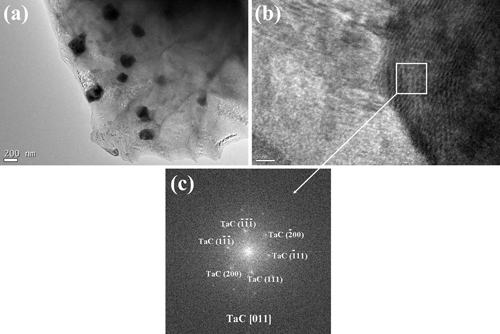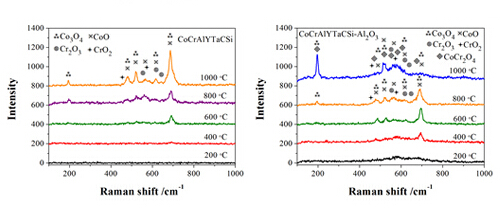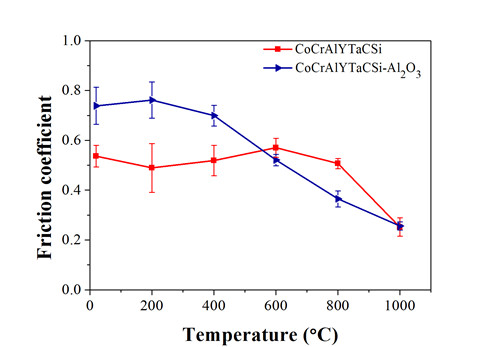As the service temperature of engines used in aeroplanes grows higher and higher and most moving parts work under temperature higher than 800°C, the issues of lubricating, anti-wear and protection of moving parts under high temperature has become an urgent problem to be solved.
The research group headed by Professor ZHOU Huidi at the Lanzhou Institute of Chemical Physics of the Chinese Academy of Sciences has prepared a-sprayed CoCrAlYTaCSiAAl2O3 coating with enhanced mechanical properties as well as good oxidation resistance and wear resistance at elevated temperatures up to 1000°C.
They have prepared CoCrAlYTaCSiAAl2O3 composite coating on Inconel 718 alloy substrate by high velocity oxy-fuel (HVOF) spraying and investigated the microstructure, mechanical properties, oxidation behavior, and dry friction and wear behavior from room temperature to 1000°C of the coating with CoCrAlTaCSi coating as a comparison.
The microhardness and mechanical properties of the two kinds of as-sprayed coatings were determined by nano-indentation. The microhardness of CoCrAlYTaCSi coating is about 573.85 HV3N, and is much higher than that of HVOF-sprayed NiCoCrAlY coating (about 450 HV1N) and that of laser cladding NiCoCrAlY coating (350.5 HV1N) , mainly due to the enhancement of TaC and SiC hard nanoparticles. Besides, the microhardness of CoCrAlYTaCSi-Al2O3 coating is as much as 654.87 HV3N, which indicates that the incorporated Al2O3 dispersion contributes to increasing the microhardness of HVOF-sprayed CoCrAlYTaCSi coating.
The oxidation behavior of CoCrAlYTaCSi coating and CoCrAlYTaCSiAAl2O3 coating up to 1000°C was studied by TG analysis. It is found that aside from various alloy phases, there are also many metallic Co and Cr in the as-sprayed CoCrAlYTaCSiAAl2O3 coating. Therefore, the CoCrAlYTaCSiAAl2O3 coating exhibits a relatively higher total mass gain per unit area at elevated temperatures up to 1000°C than CoCrAlYTaCSi coating. However, the as-sprayed CoCrAlYTaCSiAAl2O3 coating has a total mass gain per unit area of only 0.91 mg/cm2, showing quite good high-temperature oxidation resistance.
Both CoCrAlYTaCSi coating and CoCrAlYTaCSiAAl2O3 coating have a low friction coefficient of about 0.25 when they slide against Si3N4 ball at 1000°C, which could be attributed to the formation of ‘glazed layers’ on sliding surfaces and to the self-lubricity of the coatings thereat. Besides, CoCrAlYTaCSiAAl2O3 coating has better wear resistance than CoCrAlYTaCSi coating under the same sliding conditions, which is attributed to the significantly increased hardness and greatly improved mechanical properties of the coating associated with Al2O3 dispersion strengthening.
The CoCrAlYTaCSiAAl2O3 coating exhibits much better wear resistance than CoCrAlYTaCSi coating and other MCrAlY/oxide metal-matrix coatings prepared by HVOF or other technologies, showing promising potential as a protective coating of Ni-alloy based hot parts.
The work has received support from the National Natural Science Foundation of China and the findings have been published in Acta Materialia95 (2015) 164–175.

|
|
|
|
Friction coefficients of the coatings sliding against Si3N4balls at varioustemperatures. (Image by LICP) |
Wear rates of two kinds of coatings sliding against Si3N4balls at varioustemperatures. (Image by LICP) |

Raman spectra of worn surfaces of (a) CoCrAlYTaCSi coating and (b) CoCrAlYTaCSiAAl2O3 coating after sliding tests
at various temperatures. (Image by LICP)
Key words: HVOF spraying; CoCrAlYTaCSiAAl2O3 coating; oxidation resistance; high-temperature friction and wearbehavior
Contact:
ZHOU Huidi
State Key Laboratory of Solid Lubrication, Lanzhou Institute of Chemical Physics, Chinese Academy of Sciences, Lanzhou 730000, China
E-mail: hdzhou@licp.cas.cn




